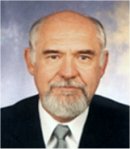

Plenary Lecture
Non-Conventional Aggregation Functions

Professor Imre J. Rudas
Rector
Fellow of IEEE
Obuda University, Hungary
Budapest, Hungary
E-mail: rudas@uni-obuda.hu
Abstract: One of the most important and central problems of fuzzy set theory has been the proper definition of set-theoretic (or logical) operations. From the beginning of the theory, the 'min' for intersection and 'max' for union is very common and popular in the literature. This is due to the fact that they have several nice properties and are easy to work with, especially in the applications. It turned out that the justification of a class of operations - instead of any particular one - for extending crisp intersection (union and complementation) is more reasonable.
This recognition has lead researchers to the definition of t-norms, t-conorms and strong negations. Generally speaking, these connectives possess reasonable properties. But t-norms, t-conorms and strong negations can also be interpreted as many-valued extensions
of the usual Boolean logical connectives conjunction, disjunction and negation, respectively. Thus it is natural that their properties have to be connected and be in accordance with that of fuzzy implications.
On the other hand, if we work with binary operations and there is no need to extend them for three or more arguments then associativity is a very restrictive and unnecessary condition. In addition, the two variables in the connective may have different semantics, whence the commutativity property may also be questionable. It has also become clear that these operators do not always follow the real phenomena and do not provide optimal performance.
These facts are very often left out of consideration. Therefore, there is a natural need for finding new operators to develop more sophisticated intelligent systems.
This paper summarizes the research results of the authors that have been carried out in recent years on generalization of conventional aggregation operators. This includes, but is not limited to, the class of uninorms and nullnorms, absorbing norms, distance- and entropy-based operators-
Brief Biography of the Speaker: Imre J. Rudas graduated from Banki Donat Polytechnic, Budapest in 1971, received the Master Degree in Mathematics from the Eotvos Lorand University, Budapest, the Ph.D. in Robotics from the Hungarian Academy of Sciences in 1987, while the Doctor of Science degree from the Hungarian Academy of Sciences in 2004. He received his first Doctor Honoris Causa degree from the Technical University of Kosice, Slovakia and the second one from “Polytechnica” University of Timisoara, Romania.
He is active as a full university professor. He served as the Rector of Budapest Tech from August 1, 2003 for a period of four years, and was reelected for three years in 2007. From 2010 Budapest Tech is changed to Obuda University and he was elected as the rector for five years.
He is a Fellow of IEEE, Senior Administrative Committee member of IEEE Industrial Electronics Society, member of Board of Governors of IEEE SMC Society, Chair of IEEE Hungary Section and Vice-President of the Hungarian Academy of Engineering.
He is the treasurer of IFSA (International Fuzzy System Association), he had been the President of Hungarian Fuzzy Association for ten years.
He serves as an associate editor of some scientific journals, including IEEE Transactions on Industrial Electronics, member of editorial board of Journal of Advanced Computational Intelligence, member of various national and international scientific committees. He is the founder of the IEEE International Conference Series on Intelligent Engineering Systems (INES) and IEEE International Conference on Computational Cybernetics (ICCC), and some international symposia. He has served as General Chairman and Program Chairman of numerous scientific international conferences.
His present areas of research activity are Computational Cybernetics, Robotics with special emphasis on Robot Control, Soft Computing, Computed-aided Process Planning, Fuzzy Control and Fuzzy Sets. He has published books, more than 500 papers in books, various scientific journals and international conference proceedings. He received more than 750 citations for his publications.